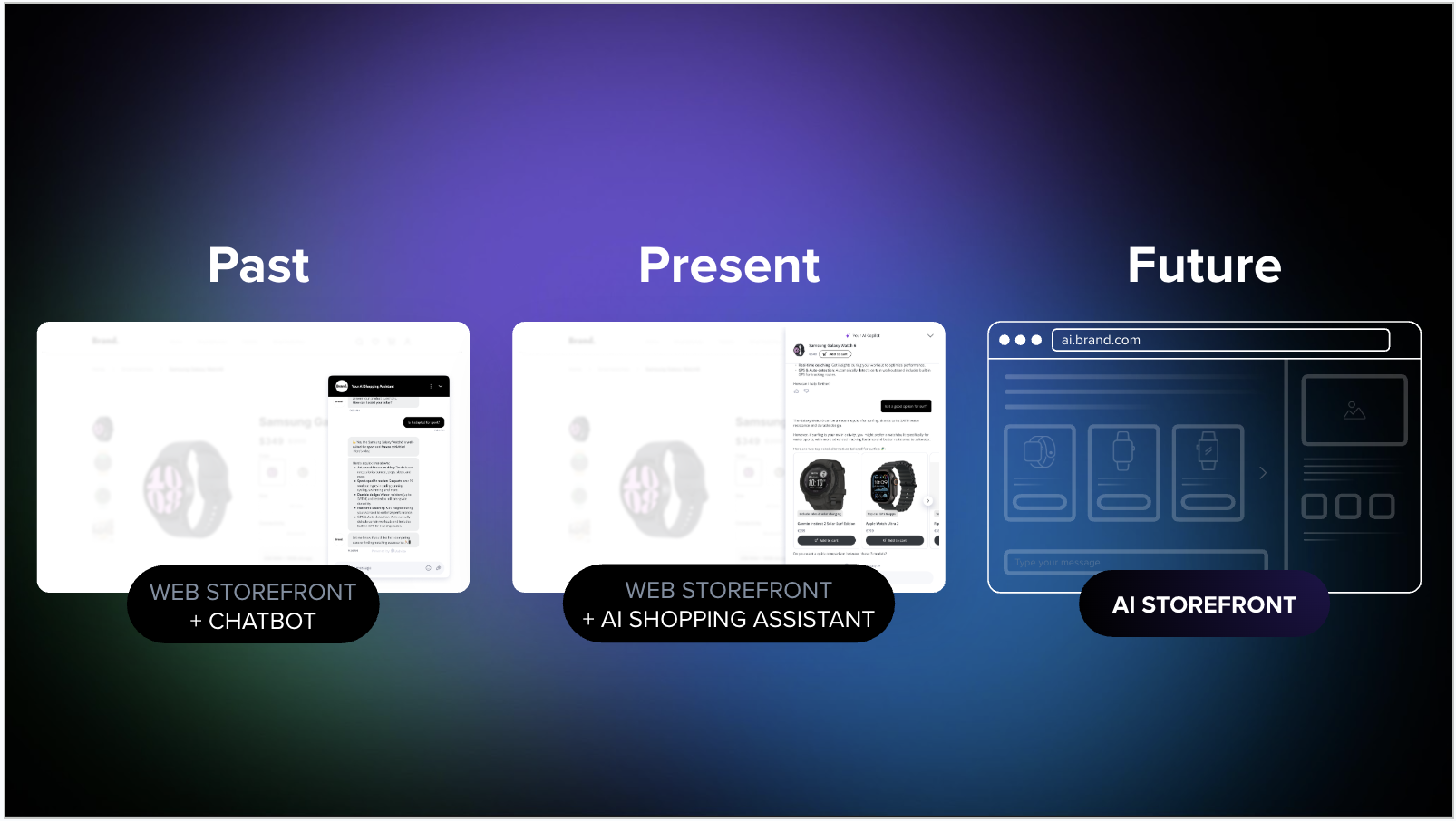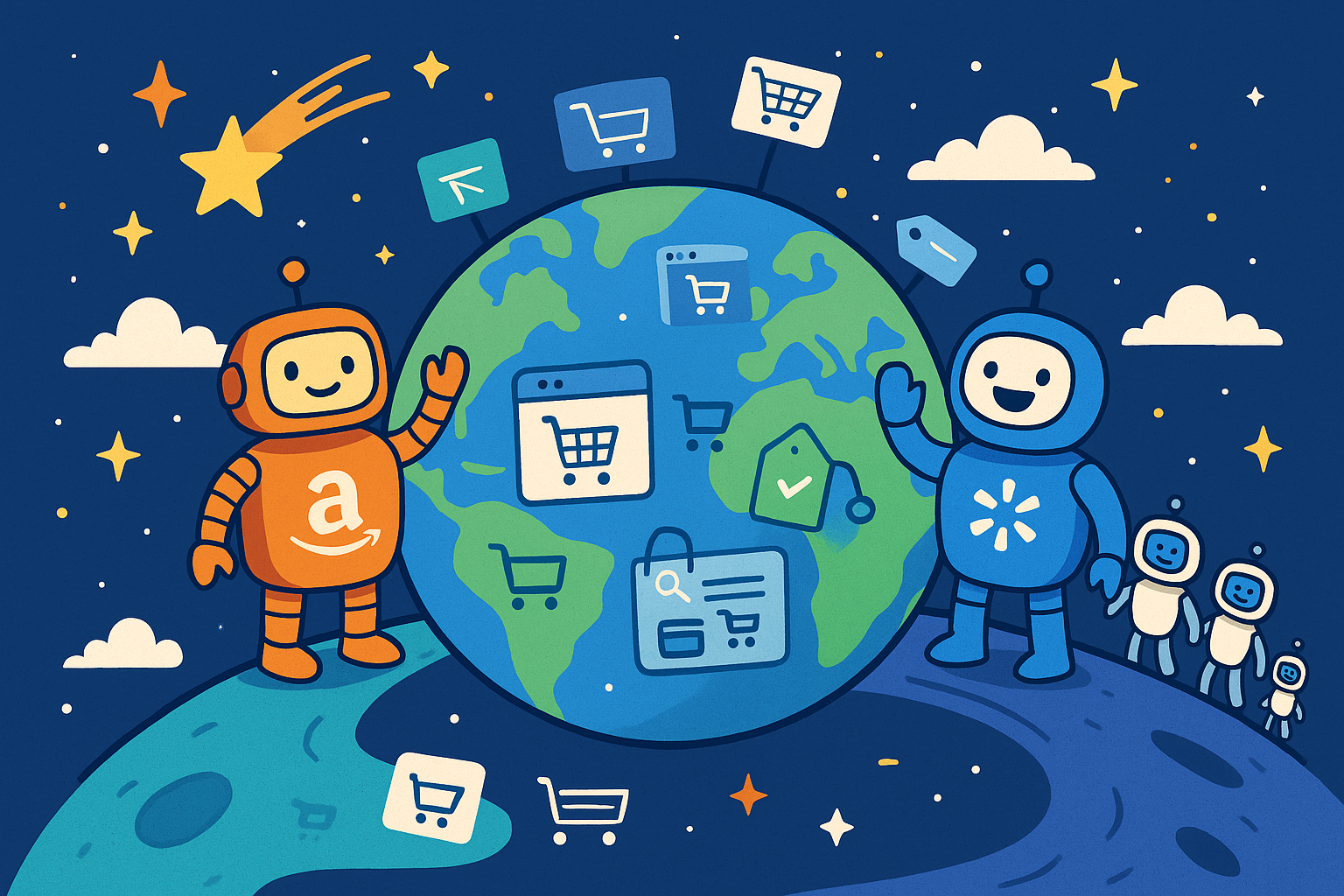How The Rise of Generative AI is Reshaping E-Commerce
iAdvize
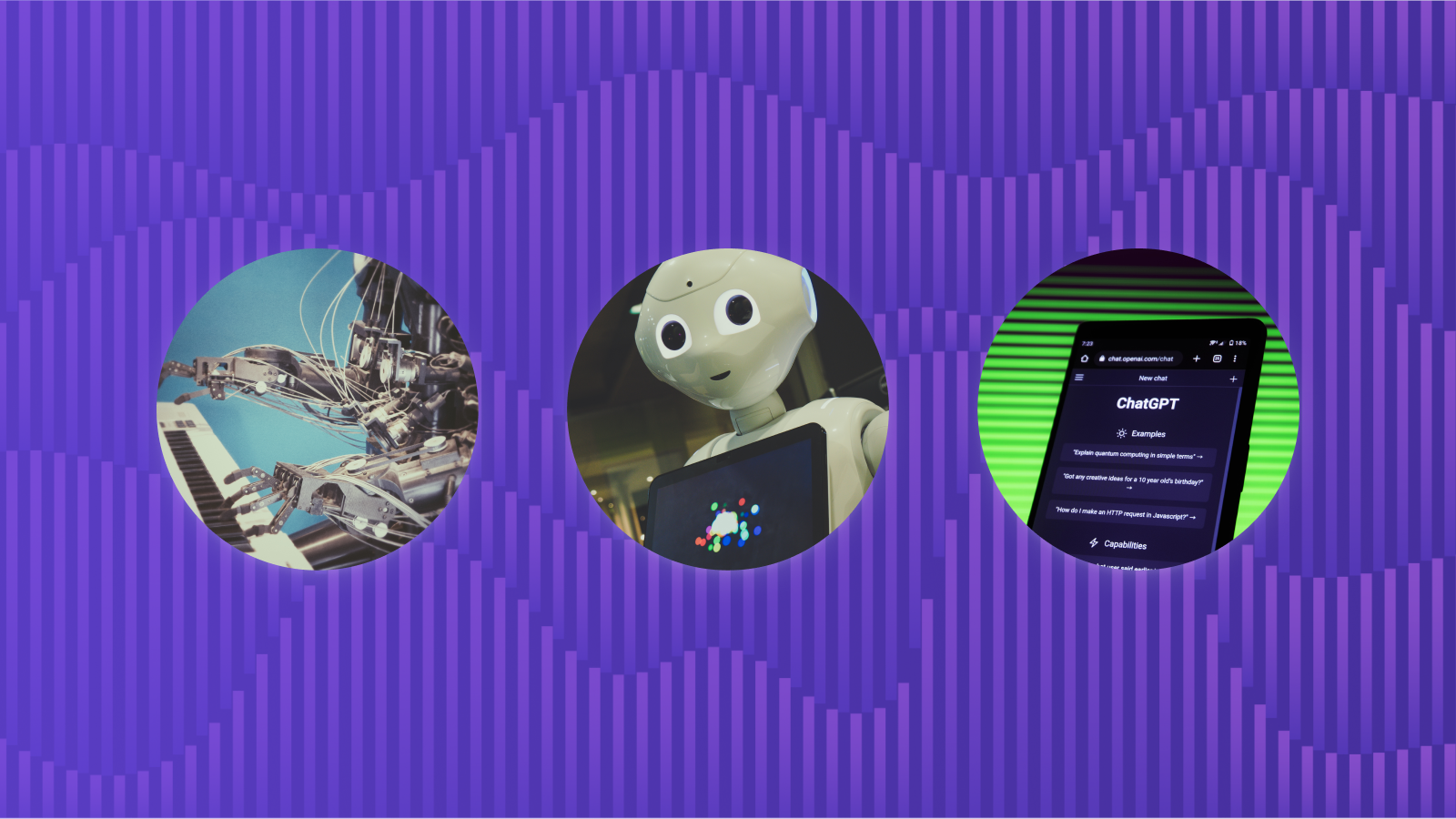
Only 1.6% of customer interactions worldwide are automated through artificial intelligence. This percentage is projected to grow rapidly in the near future due to the impact generative AI is expected to have on brands’ digital shopping experiences. And consumers are ready—73% believe that AI will have a positive impact on the customer experience. Generative AI is about to reshape conversational commerce, and the next big question is: how do we deploy it at scale and quantify its impact? In this article, we’ll answer this question from the analysis of three AI experts: Tariq Krim, Tech Entrepreneur & Philosopher, Antoine Pierart, Director of Marketing & Customer Experience at Cdiscount, and Julien Hervouët, Founder & CEO of iAdvize.
Generative AI: History, Challenges & Limitations
To understand the revolutionary nature of generative AI today, we need to look back at its history.
The Origins of Artificial Intelligence
There are three types of artificial intelligence:
- Symbolic AI: This AI runs off of manually provided rules that explain how it should behave, like Siri for example.
- Predictive AI: Through data analysis, this AI predicts future behavior based on intention detection. Today, Amazon uses a comprehensive predictive model built entirely on the cloud that can predict future demand in seconds.
- Generative AI: This is a new branch of AI, and the focus of our interest today. It’s capable of instantly generating text and images based on prompts.
"These technologies are based on neural networks and have been around for a very long time."
Tariq Krim, Tech Entrepreneur & Philosopher
The idea of AI has been around since the 1960s. However, it wouldn’t be until about 20 years later that Geoffrey Hinton began conceptualizing deep learning, or ‘teaching machines to think.’ He ultimately laid the groundwork for modern artificial intelligence.
He began by teaching AI to recognize images. Although initially promising, the technology fell short of his ambitions and entered what is commonly referred to as the "AI winter." Some scientists turned away from it altogether, but Hinton continued, as did one of his students, Yann LeCun, who’s currently in charge of AI at Meta.
Together, they began research on backpropagation techniques, a supervised learning algorithm that allows the AI to correct its own mistakes. The brilliant work of these researchers and many others is rapidly advancing AI’s progress into the modern AI you use today.
"Imagine a chef and a food critic. The chef prepares a recipe, the critic tastes it and feels it lacks salt. So, the chef adjusts the recipe, but the critic finds there's too much sauce. Let's imagine this process happening hundreds, thousands of times until the critic says it's perfect. These techniques are what produce incredibly powerful machine learning."
Tariq Krim, Tech Entrepreneur & Philosopher
AI's Coming of Age
Artificial intelligence took a massive leap forward with the arrival of the internet and processors. The explosion of readily available data and the power of CPUs (central processing units) are ultimately what gave it its wings to develop into what it is today.
The ImageNet program in 2012 led to machines becoming capable of identifying elements in a photo, effectively transforming the company’s operations—any image from there on out could be instantly analyzed by this technology.

In 2015, machines surpassed humans in their image recognition abilities. With its predictive and visual capabilities, this groundbreaking achievement opened up endless possibilities for artificial intelligence.
"We’re now entering into the unknown, a world where the impossible becomes possible."
Tariq Krim, Tech Entrepreneur & Philosopher
Because AI can generate text from an image, researchers decide to experiment with the opposite. They asked it to create an image based on text, leading to innovations like Midjourney.
Around the same time, Google invented Transformers—the famous "T" in ChatGPT—which allows for the construction of highly coherent text through the absorption of all the available text on the internet. The initial versions of GPT left a lasting impression. Now, Version 3.5 is the epicenter of the ChatGPT buzz, and it's only the beginning of what we’ll see with this technology.
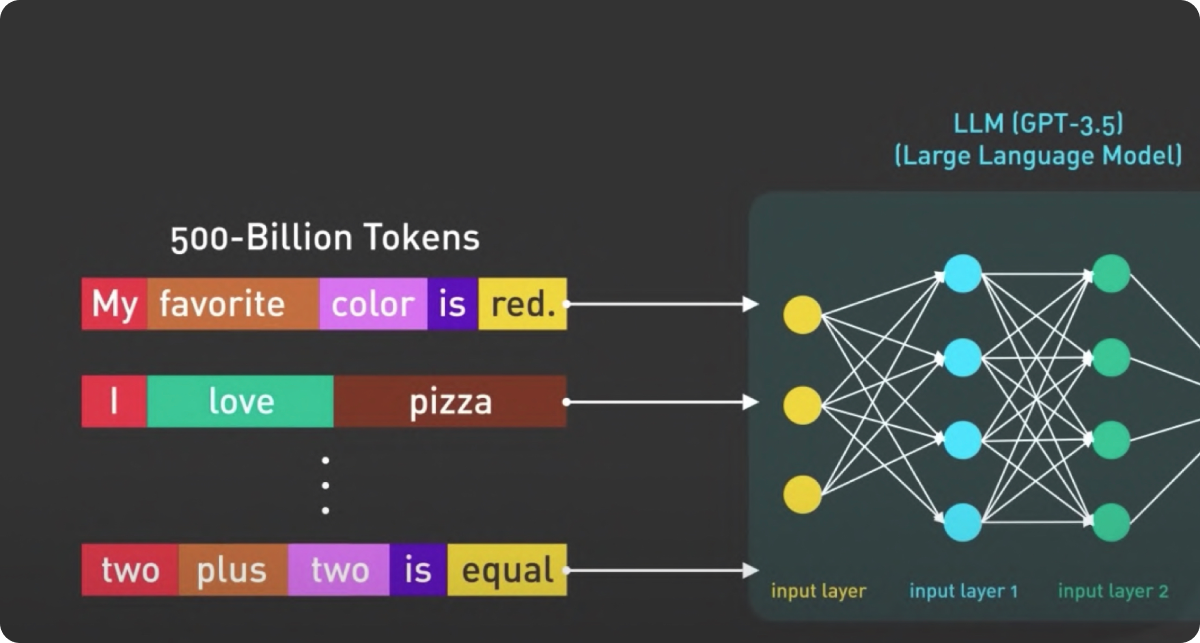
"As soon as language is involved, which is crucial since it’s our main tool of communication, the entire economy is going to be reinvented. It’s evident that the $20 trillion Search economy is being disrupted. We’re entering a new phase in terms of business, with new opportunities."
Tariq Krim, Tech Entrepreneur & Philosopher
According to Krim, Microsoft has made a masterstroke by partnering with OpenAI to create ChatGPT for three reasons:
- It’s a costly endeavor and Microsoft brought the necessary Azure infrastructure for its development
- By joining forces, Microsoft and OpenAI combined their strengths—an enterprise experienced in achieving business objectives and a research-driven company unafraid of innovation
- Microsoft has the advantage of leveraging content from technologies like Word and Excel
Generative AI Limitations
Generative AI is fascinating because it works extremely well. And yet, there are still risks associated with it, some of the most noteworthy being:
- Use for illegal purposes: It’s easy to exploit this technology, which is why regulations are necessary to protect private data.
- The question of privacy: Everything on the internet is accessible, meaning that ChatGPT, a publicly accessible tool, can pull from any of this information, as well. This is why it’s important that generative AI for businesses is a separate and protected solution.
- Hallucinations: Sometimes AI tools, like ChatGPT, can get stuck on a response, and instead of saying they can’t create an answer, will instead partially or fully invent one. That’s why it’s important to verify all proposed answers before using them.
"This question of regulation will be important because it’ll become necessary to ensure that it protects both the business environment and citizens from potential abuse."
Tariq Krim, Tech Entrepreneur & Philosopher
How do you ensure that you’re receiving the maximum benefits possible from the use of generative AI in your customer relationships? The technology is here and the challenge now lies in translating it into tangible applications.
Generative AI: How It Transforms Brand Conversations
With ChatGPT, the tech world has become divided into two categories:
- Those wondering how to compete with OpenAI
- Those wondering how to harness the technological capabilities provided by OpenAI
AI tools and ChatGPT aren’t just a passing trend. Instead, they’re the beginning of a wave that’ll reshape e-commerce going forward. And in December 2022, iAdvize showcased the first application of generative AI for business purposes, which involved using it to summarize messaging exchanges between website visitors and customer service agents.
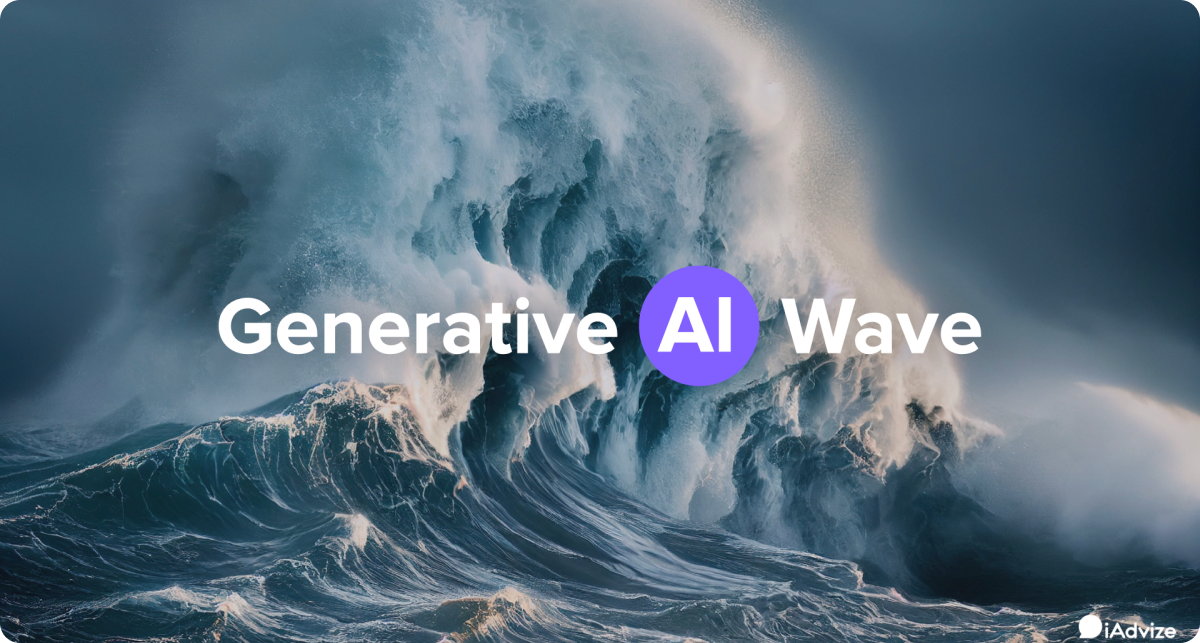
Until recently, the limitations surrounding hallucinations and privacy rendered generative AI ineffective in a business context.
"Recently, we’ve been able to address these challenges and enable companies to deploy trustworthy generative AI in a conversational context."
Julien Hervouët, CEO of iAdvize
So, in order to offer a trusted generative AI, three criteria were essential for this solution:
- It must be connected to company data, its respondents, and its channels
- It must be compliant with country regulations, as well as the company's own rules
- It must be controlled, supervised, and constantly monitored for its revenue and experience impact
This AI is provided through a unique architecture that is allowed access only to the company's data and utilizes various large language models (LLM), including leveraging OpenAI's API and other open-source models. iAdvize’s established rules for each brand then come into play to refine and control the experience. Ultimately, the generative AI acts as a copilot, enhancing the capabilities of your agents to provide expert advice quickly, and your shoppers to receive expert advice in record time.
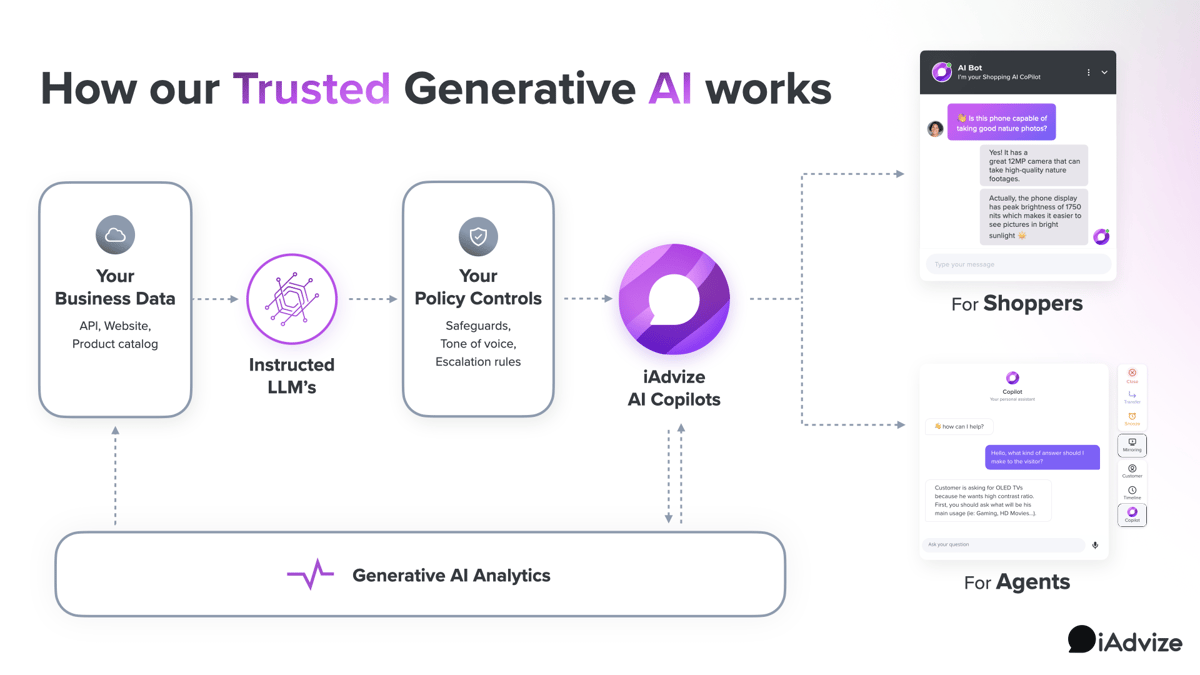
Trusted Generative AI for E-commerce has already been deployed for some brands, including the leading French e-commerce company, Cdiscount.
Cdiscount Enhanced Its Conversational Performance With iAdvize’s Generative AI
Cdiscount’s mission is to offer the best promotions on the internet and cater to all consumer equipment needs. Their biggest challenge in recent years has been to organize their customer experience interactions between their 20 million unique monthly visitors and the 80 million products they have across their digital marketplace. To achieve this, Cdiscount used generative AI for e-commerce.
"At the beginning of the year, when ChatGPT had just been released, we realized that we shared the same type of questioning and vision on the subject with iAdvize. This encouraged us to launch a test just one month after our first discussion on the matter."
Antoine Pierart, Director of Digital, Marketing & Customer at Cdiscount
Generative AI for E-Commerce Test: Challenges & Deployment Steps
With over 8 million active customers per year, providing guidance to find the right product and facilitate purchases is only feasible at scale. In practical terms, success is measured by their improvements in conversion rates, customer satisfaction, and long-term customer loyalty.
To achieve this, Cdiscount revamped their existing conversational strategy, which previously involved:
- Decision tree chatbots that handled simple cases and recurring questions, like installment payments and delivery information
- Customer service agents who provided rich, authentic guidance to online shoppers
"We wanted to see if generative AI could directly interact with the customer."
Antoine Pierart, Director of Digital, Marketing & Customer at Cdiscount
Cdiscount also had the following objectives:
- Ensure response reliability: By feeding the AI product information content, the brand focused the AI on yielding controlled and accurate data. Additionally, it established a crucial rule through the platform: if the AI cannot provide an answer, it must transfer the conversation to a human respondent, eliminating the risk of hallucinations.
- Ensure customer data protection: By engaging in advice based on product information, the brand can avoid handling sensitive data and can respect consumer rights.
The next step for the brand is to expand the deployment of conversational generative AI to cover more product categories without the need for escalation to human agents.
Results: Maintained Revenue Growth While Decreasing Costs
Within a few weeks, the AI was capable of handling up to 40% of customer conversations from start to finish. In the remaining cases, a human agent took over immediately. Among this 40%, the level of performance matched that of a conversation conducted with a human agent. Customer satisfaction also surpassed that of all the decision tree chatbots Cdiscount was previously using.
"In total, we’re able to handle more conversations for the same cost. In other words, we’re able to maintain the same level of value-added with nearly 40% lower costs."
Antoine Pierart, Director of Digital, Marketing & Customer at Cdiscount
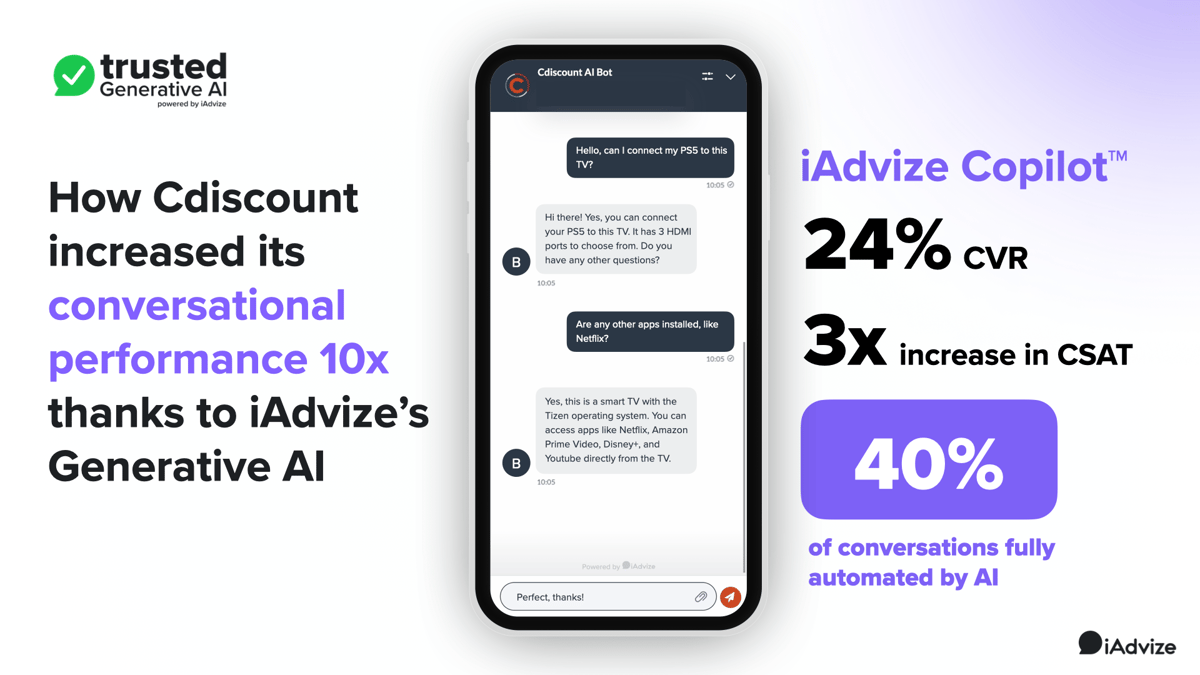
Faced with these exceptional results, Cdiscount aims to further open up conversational generative AI to handle a larger part of the customer journey.

.png)
.png)



